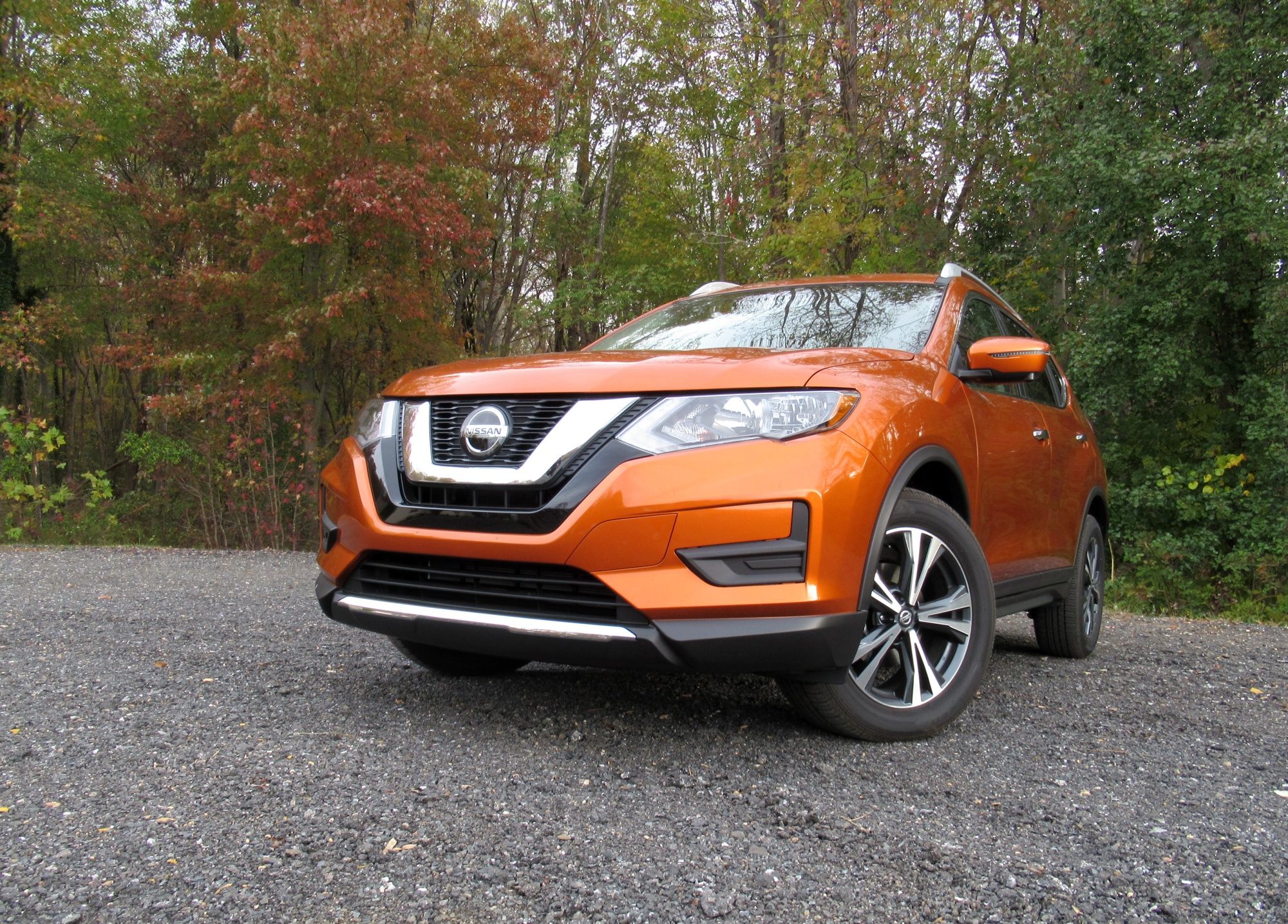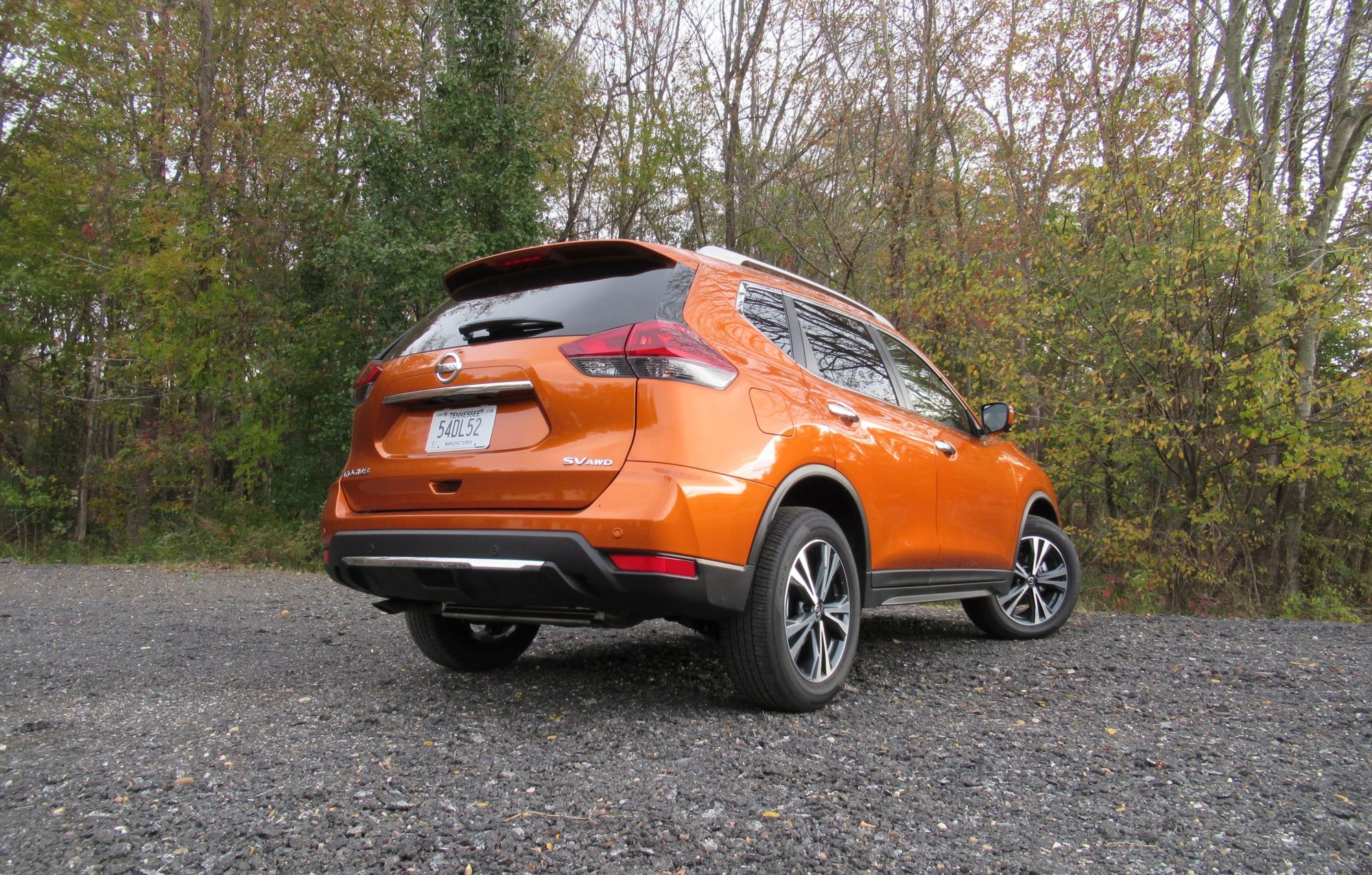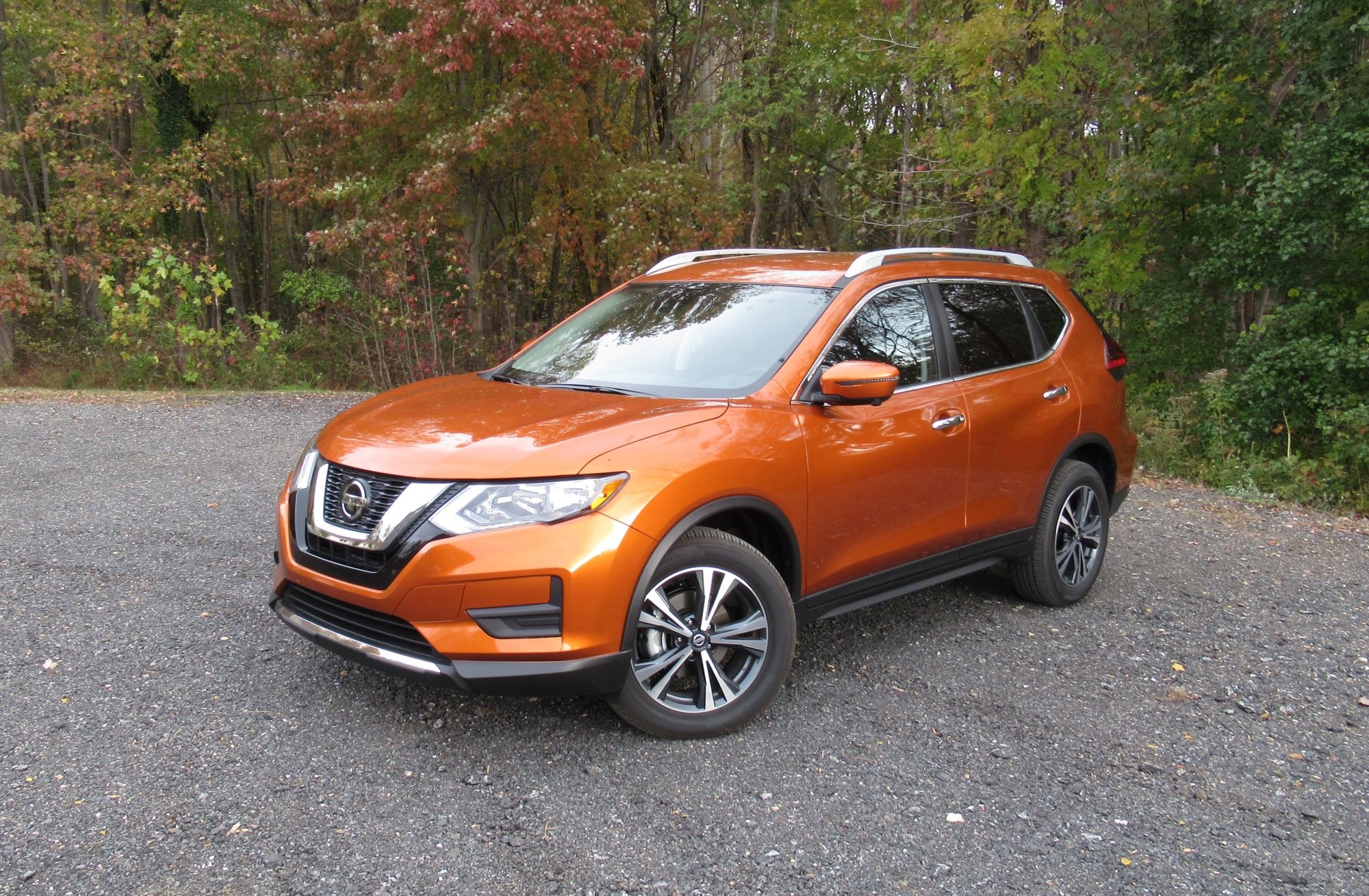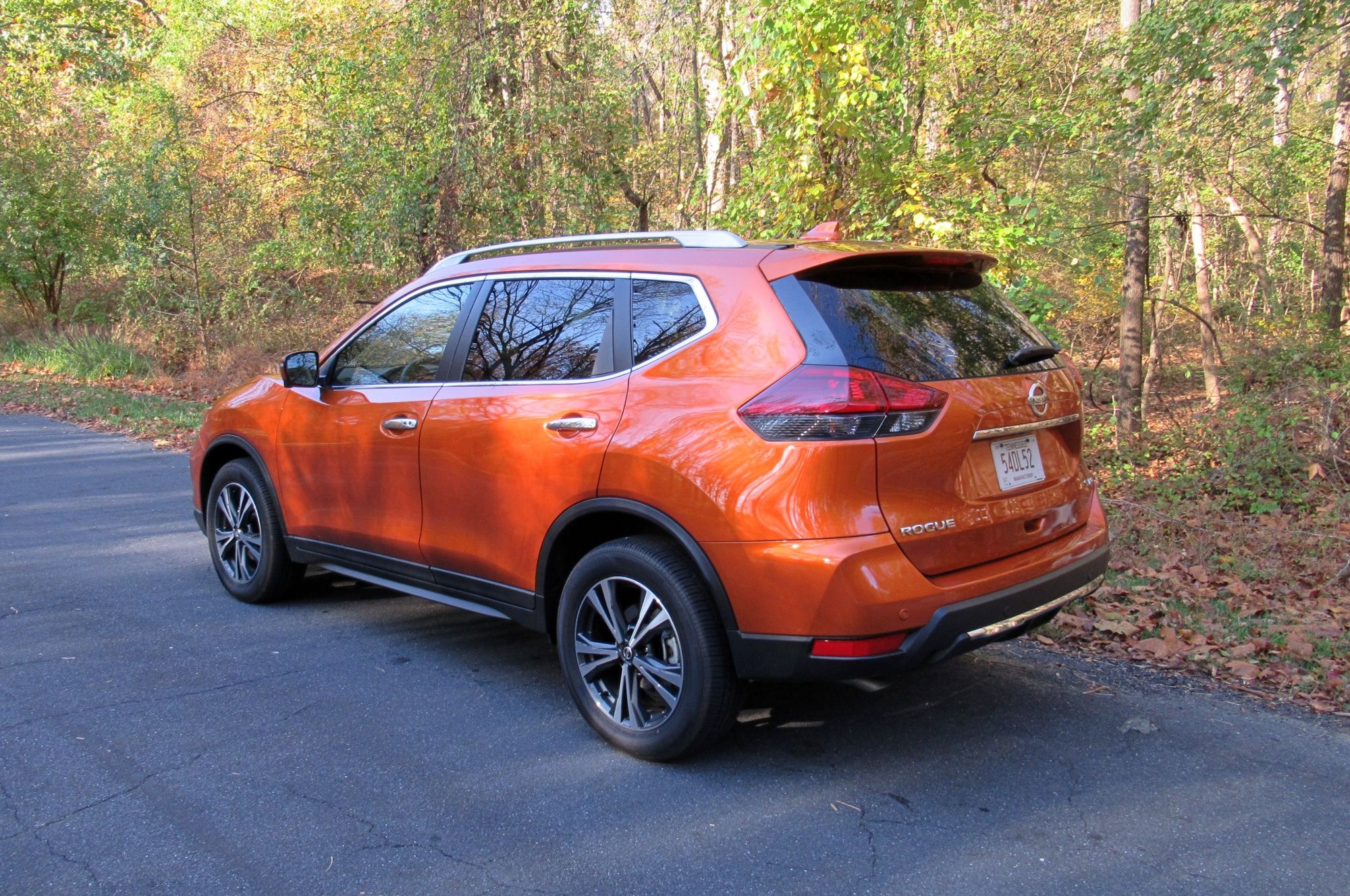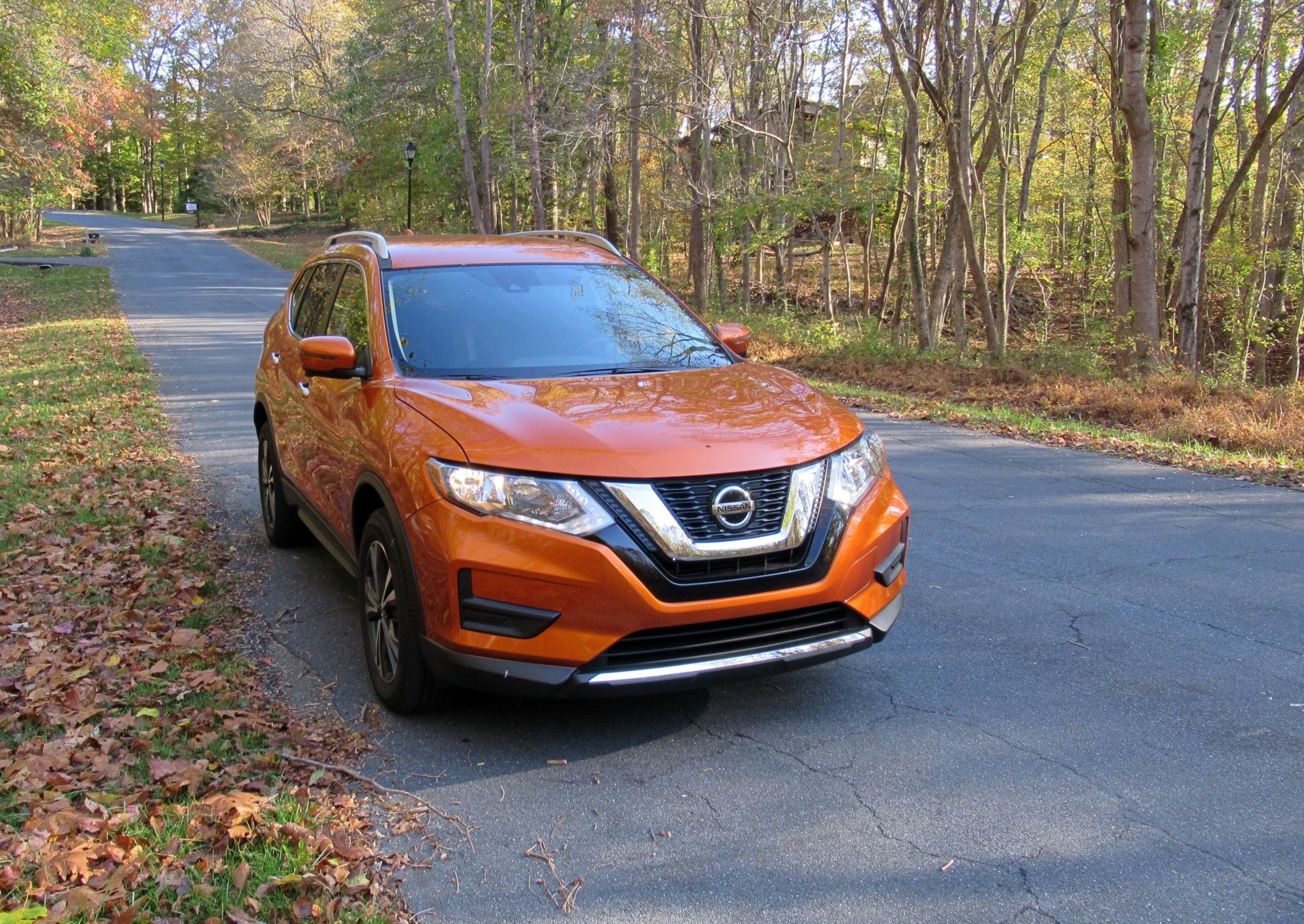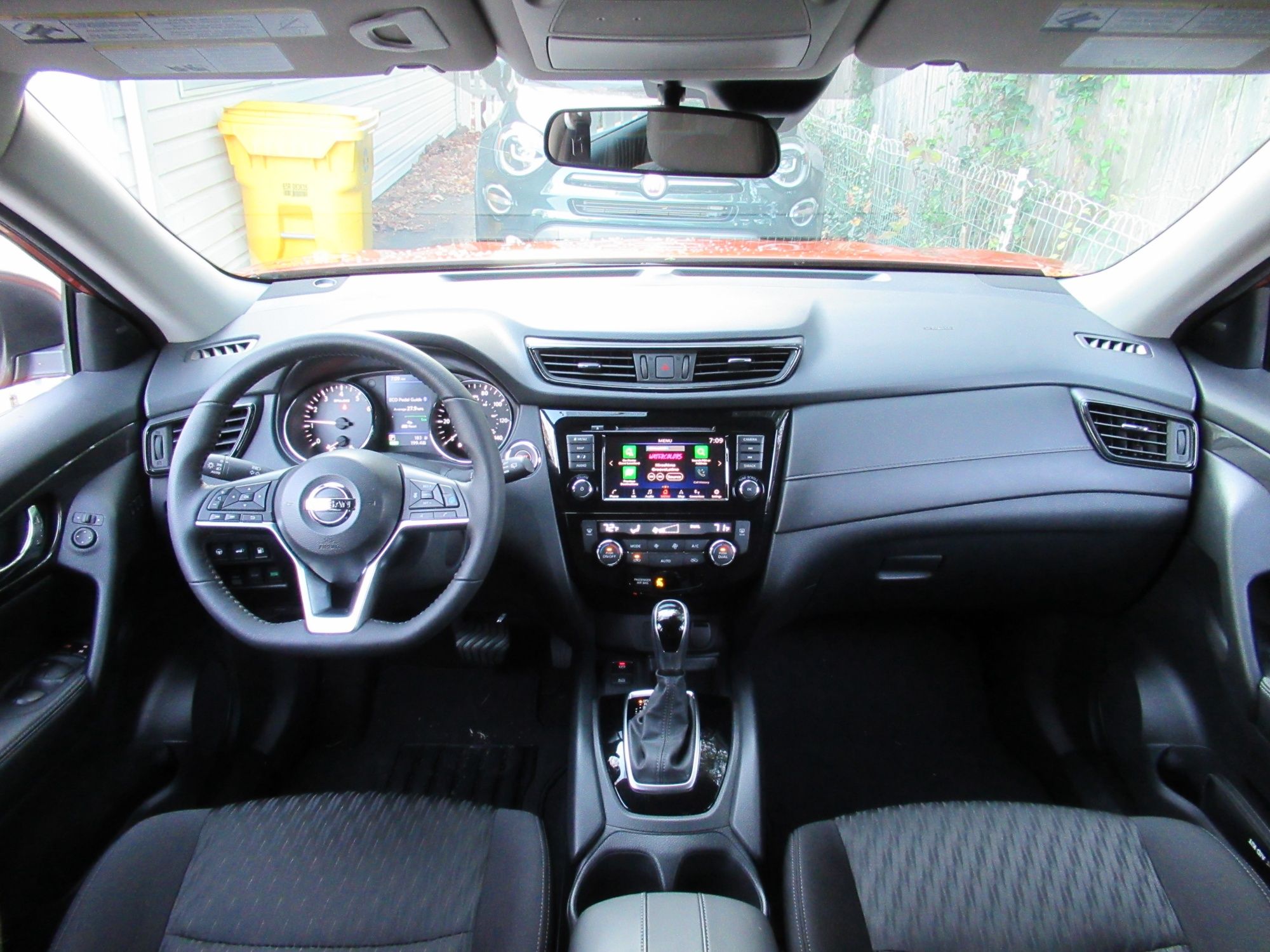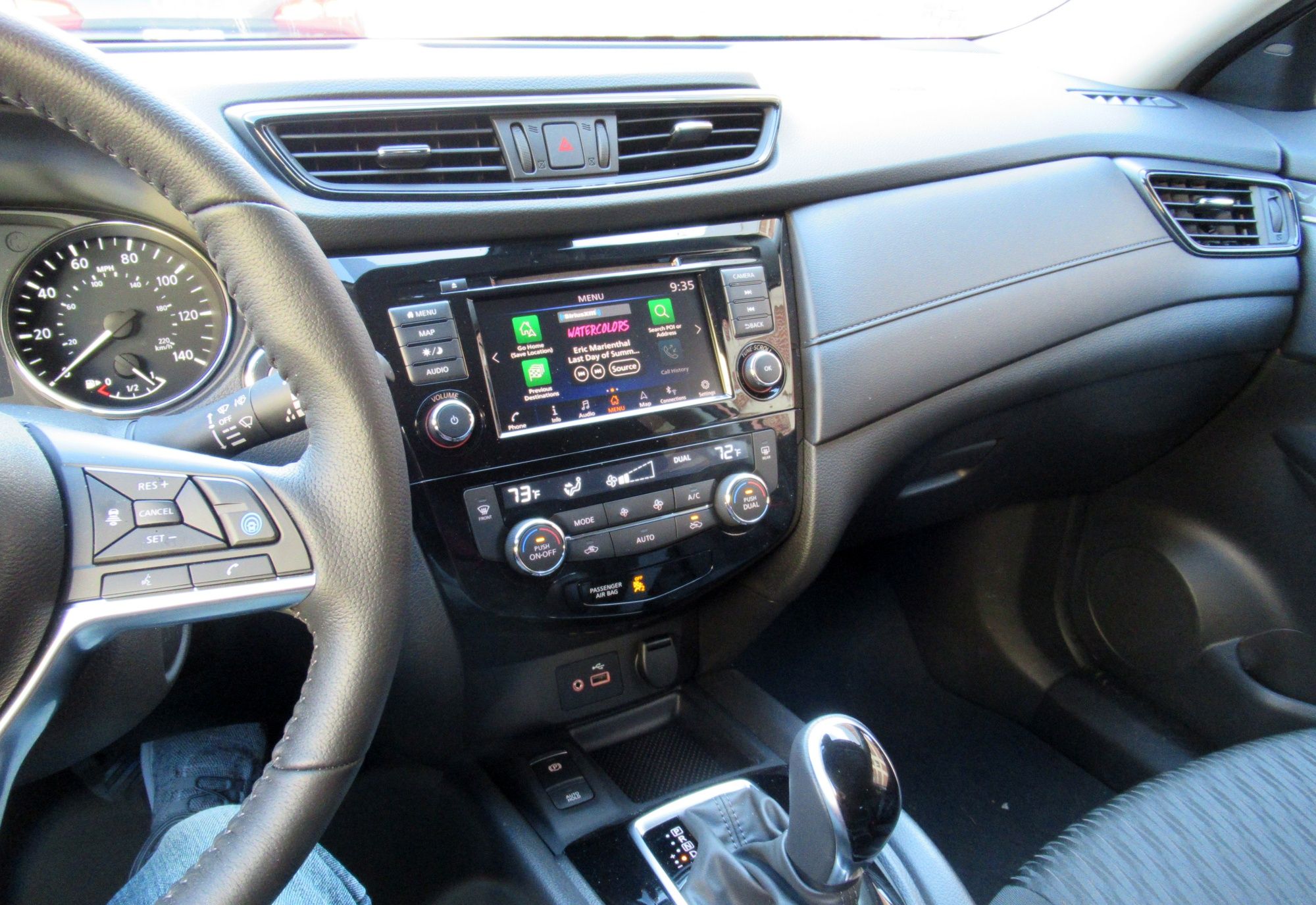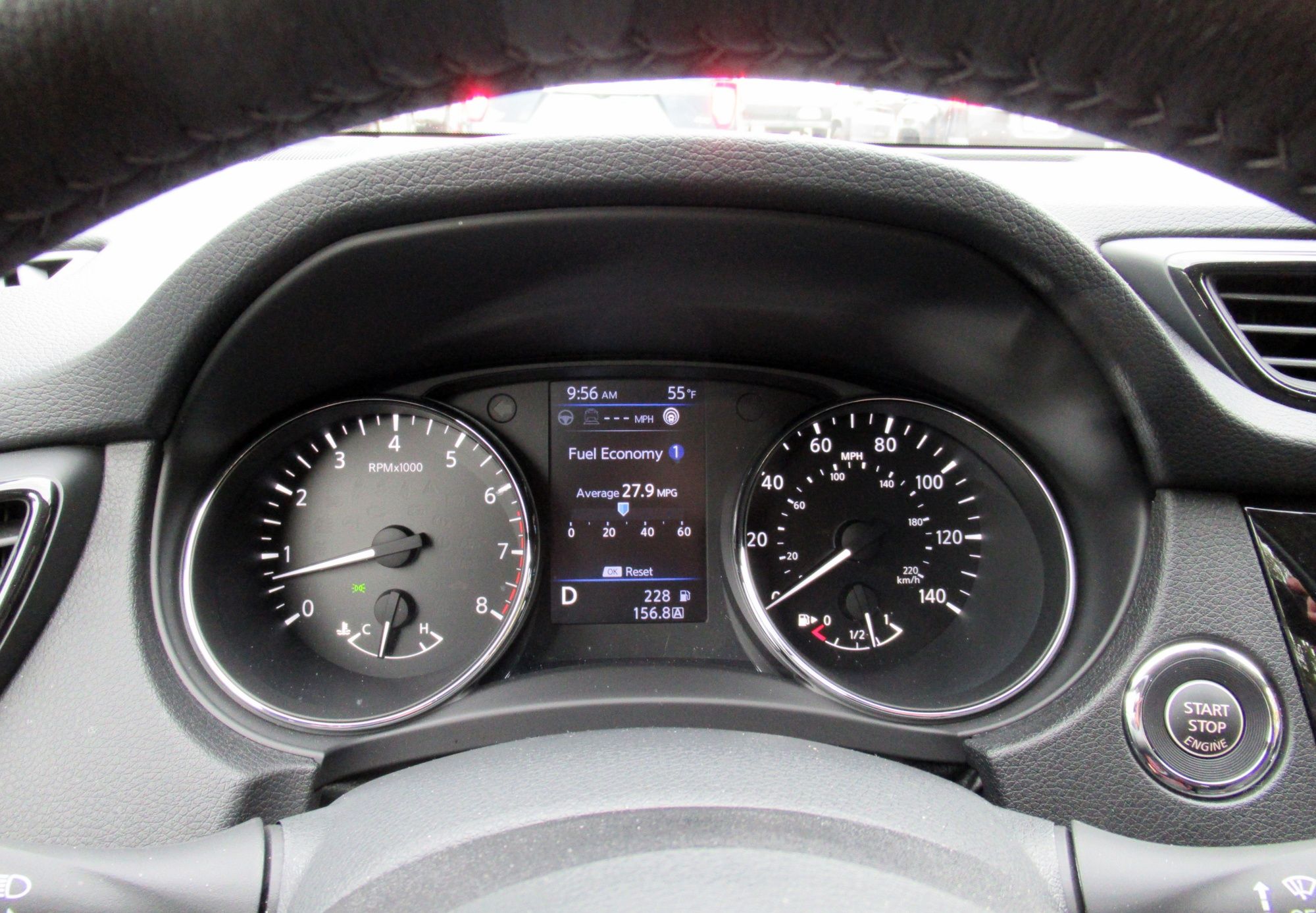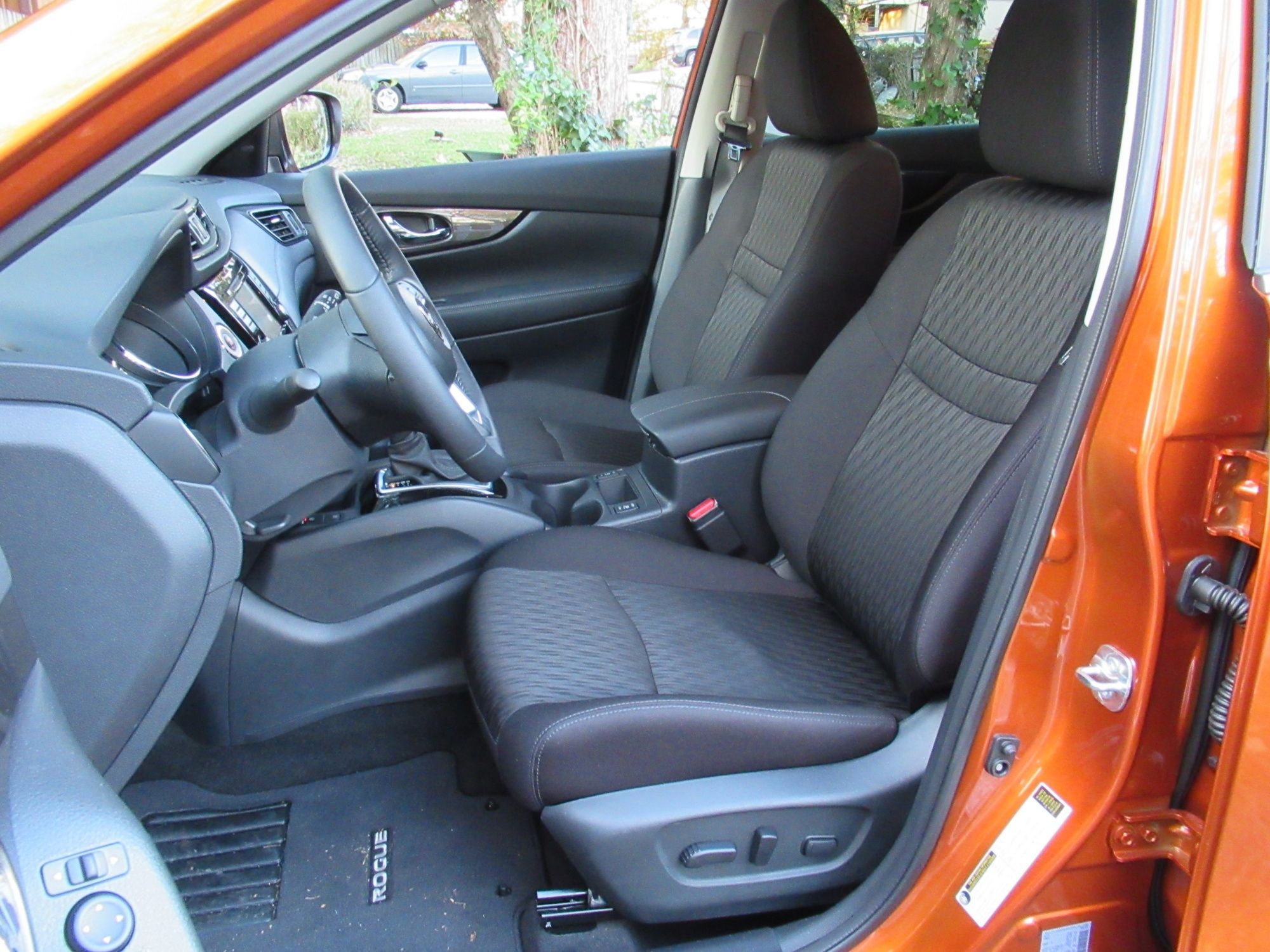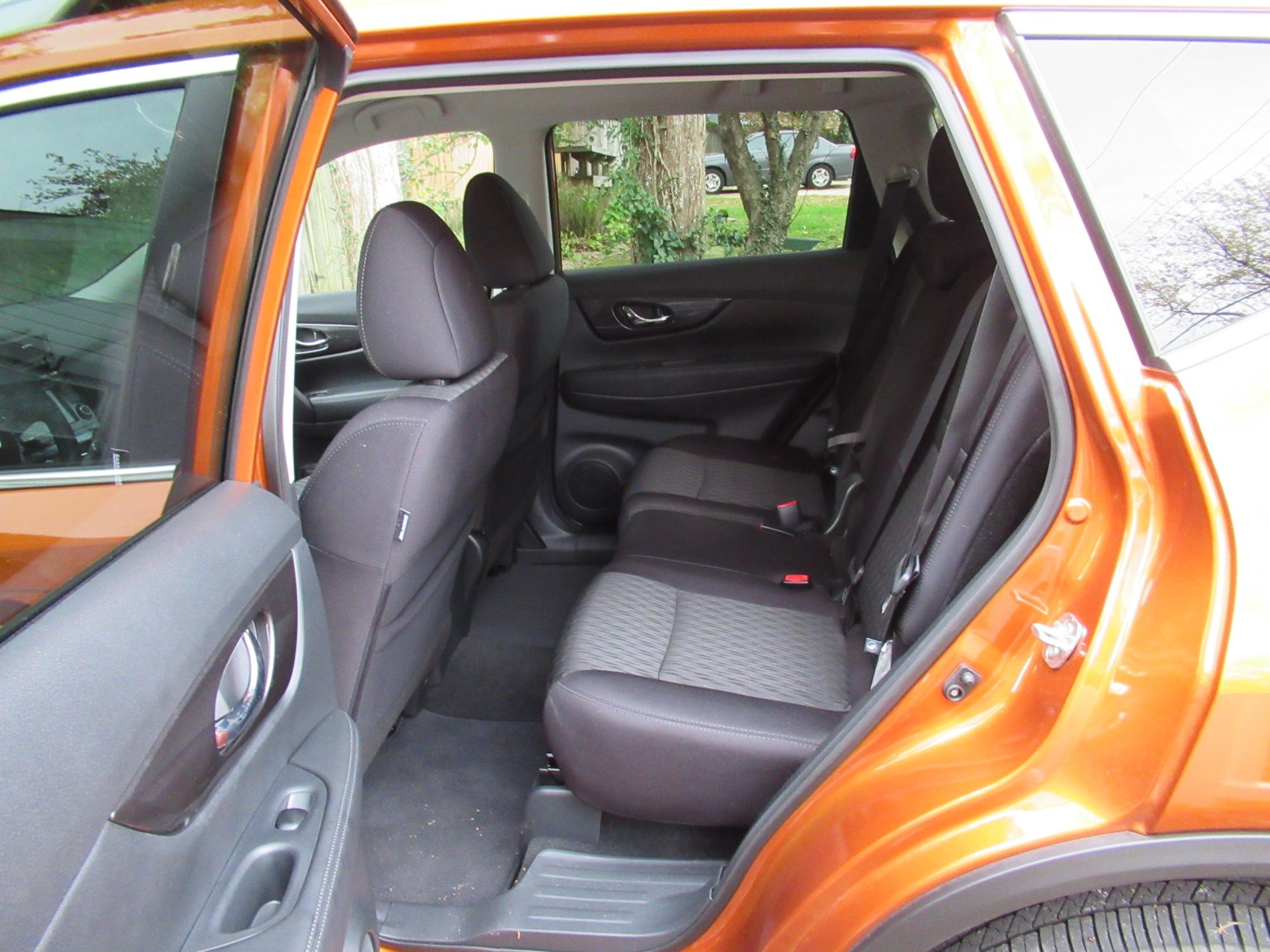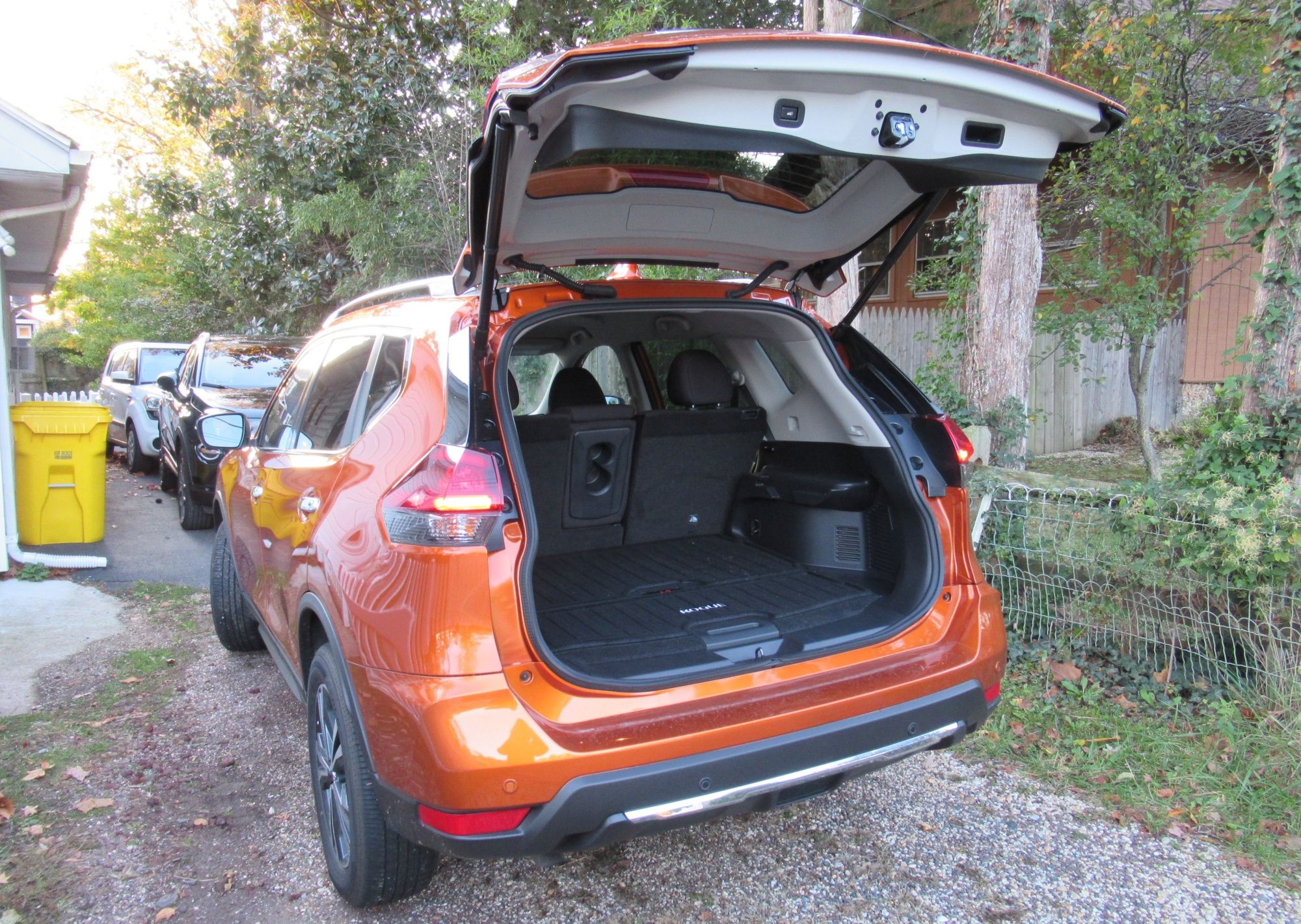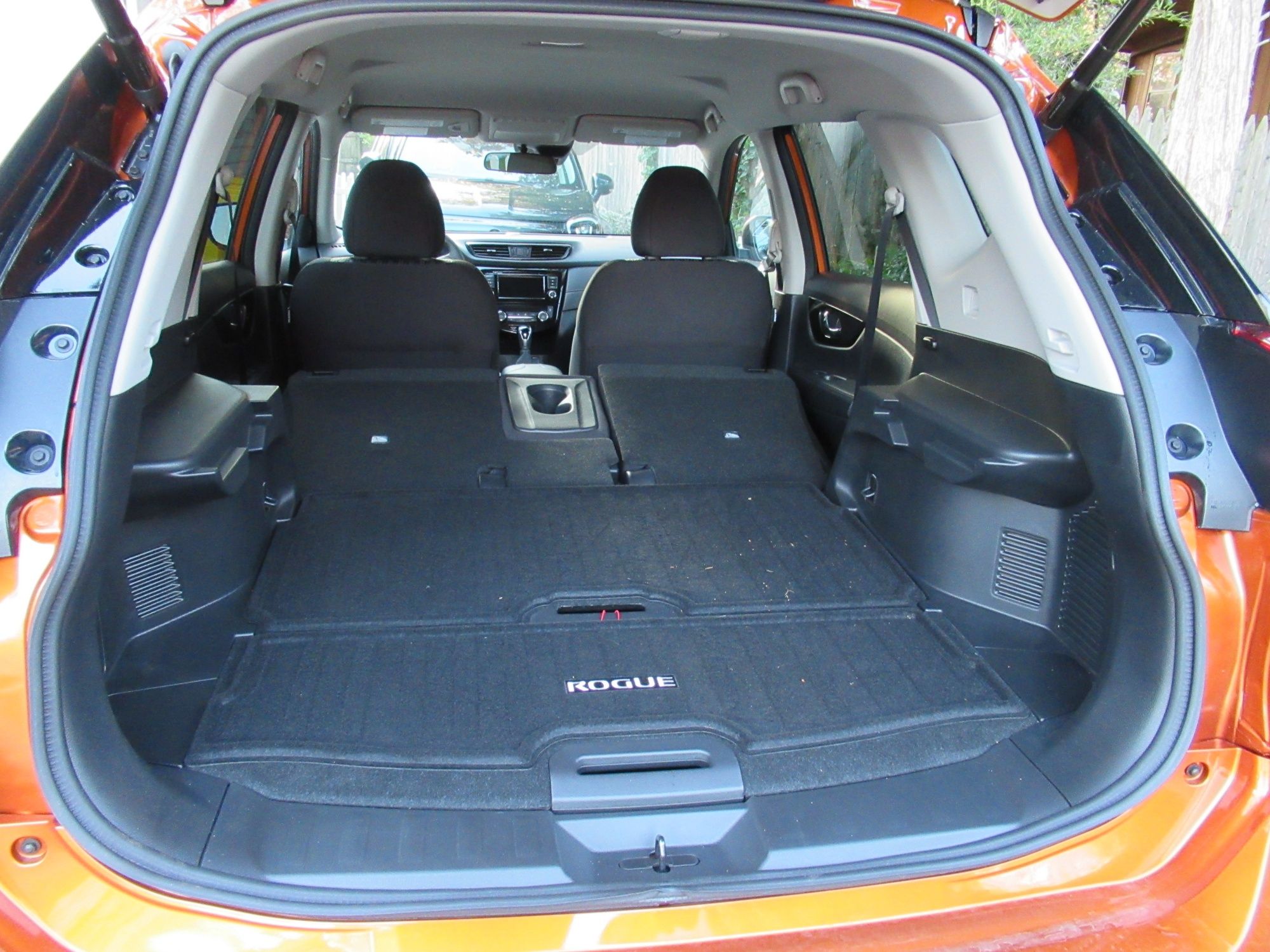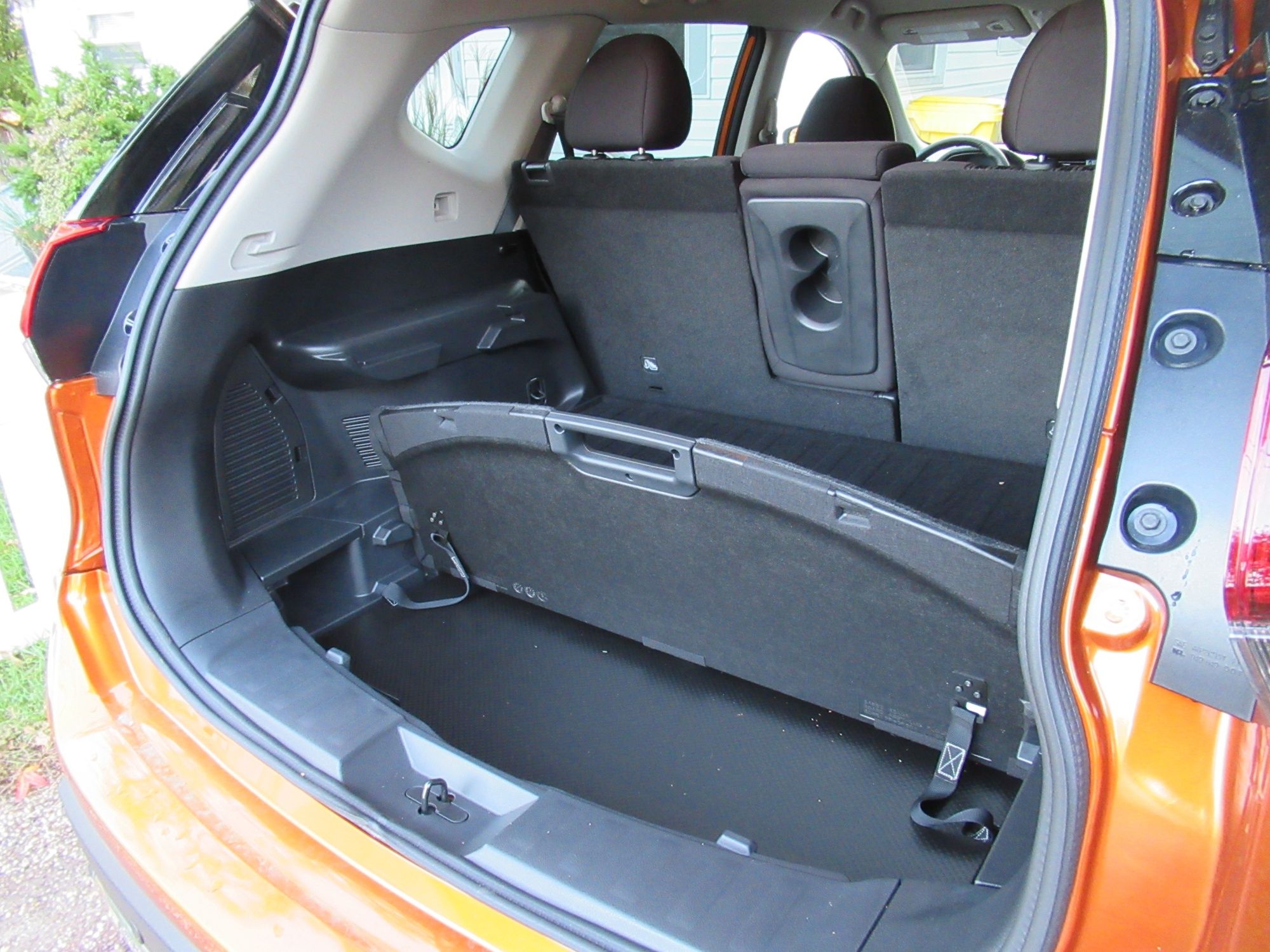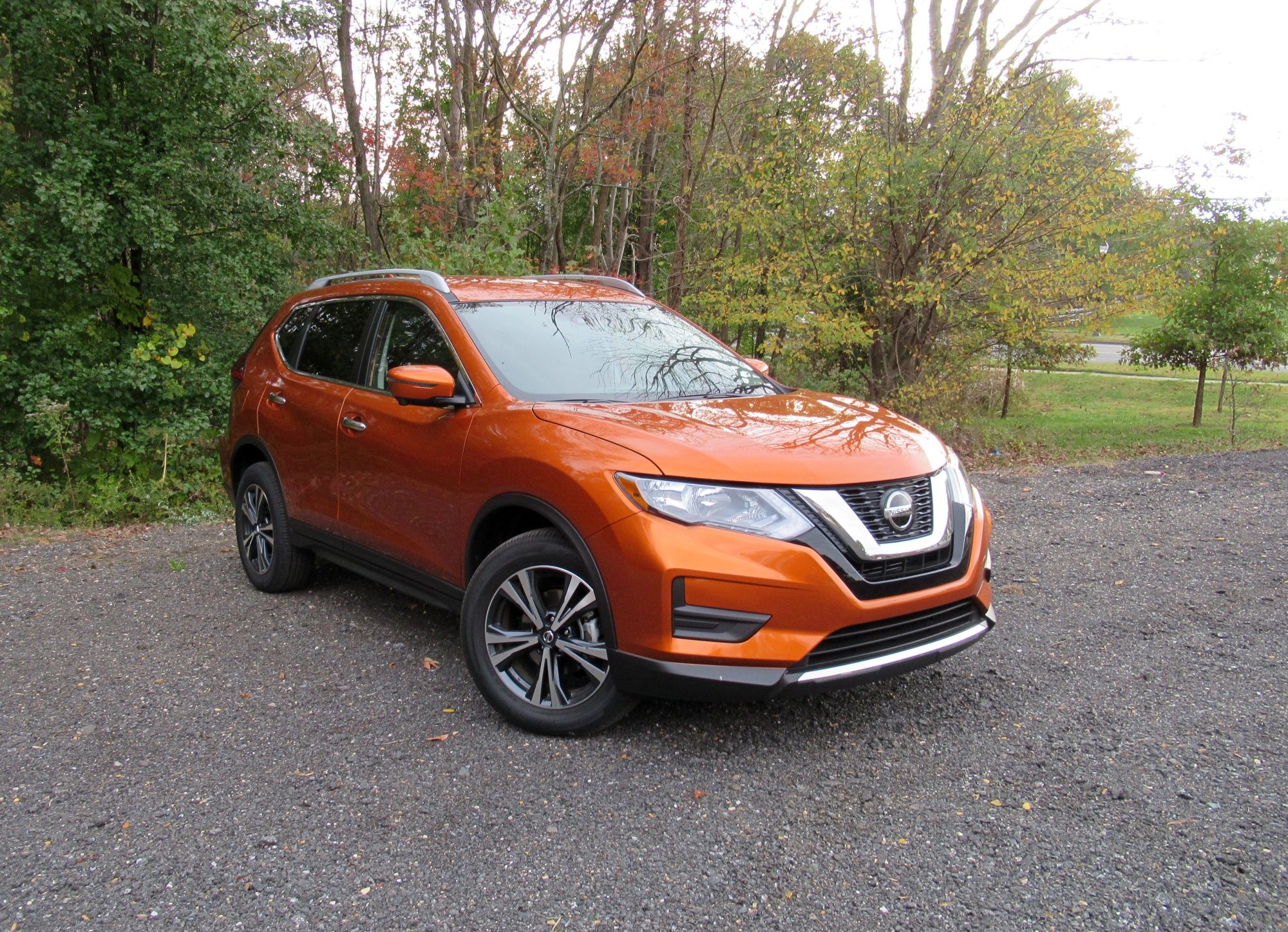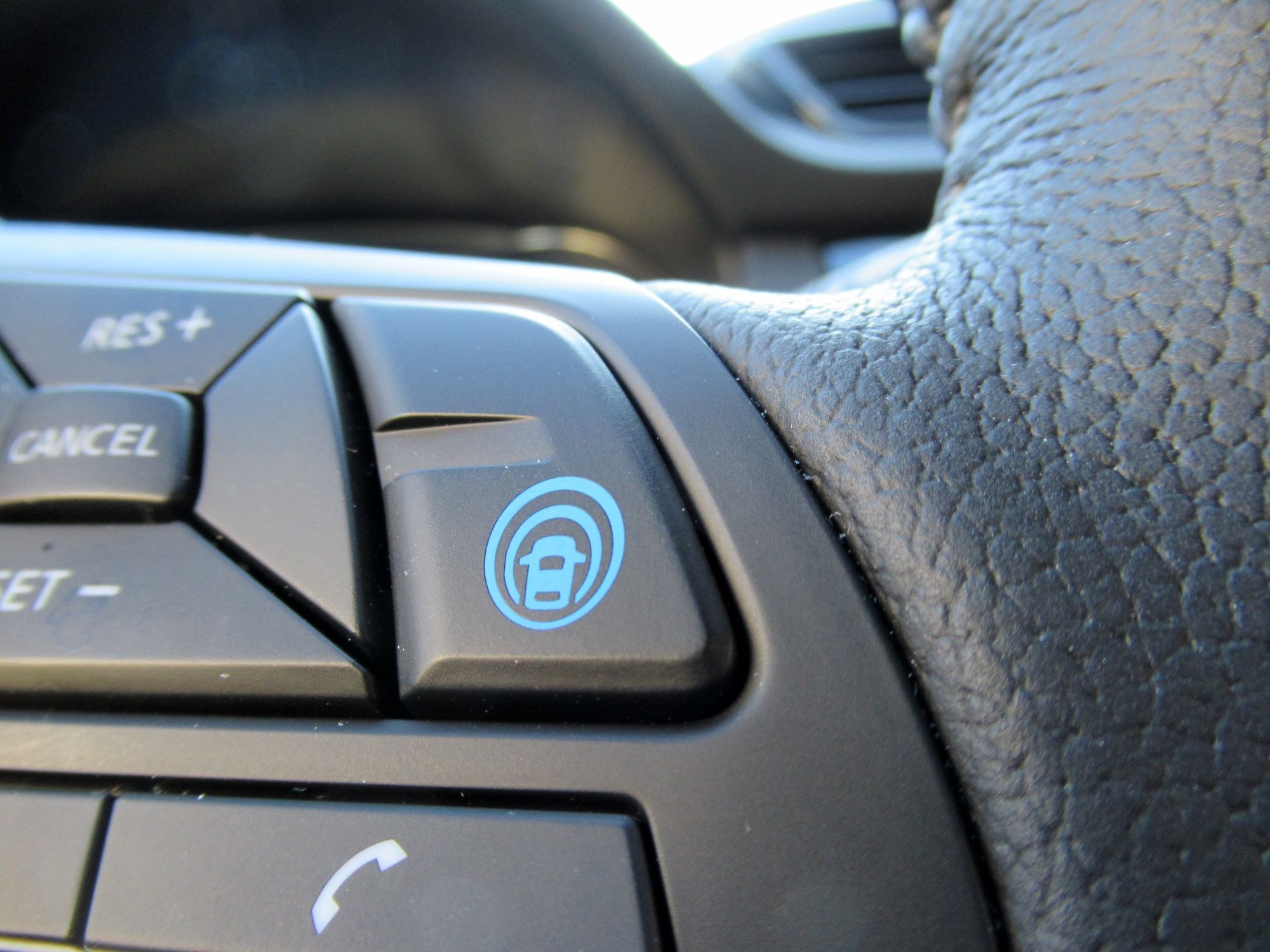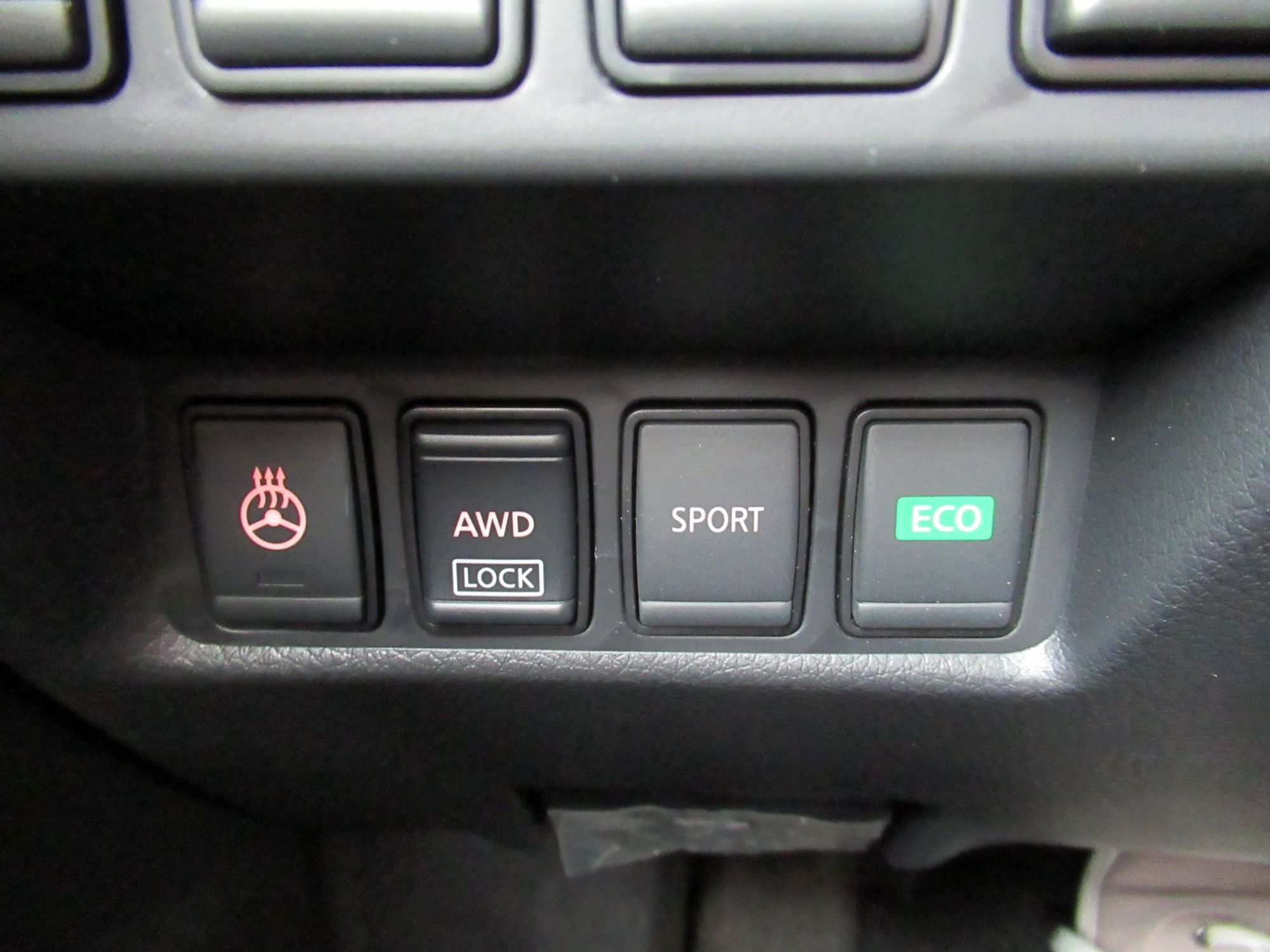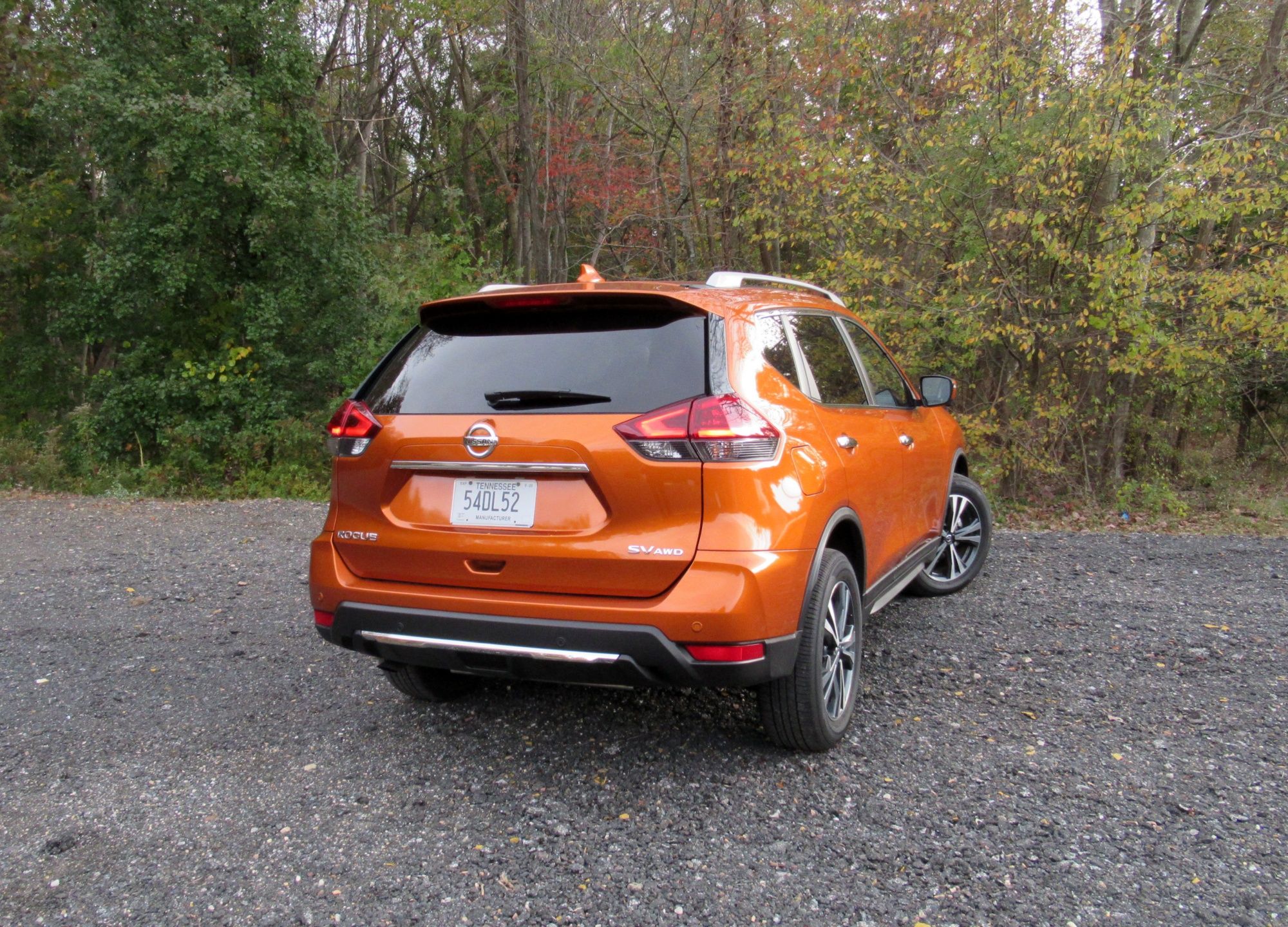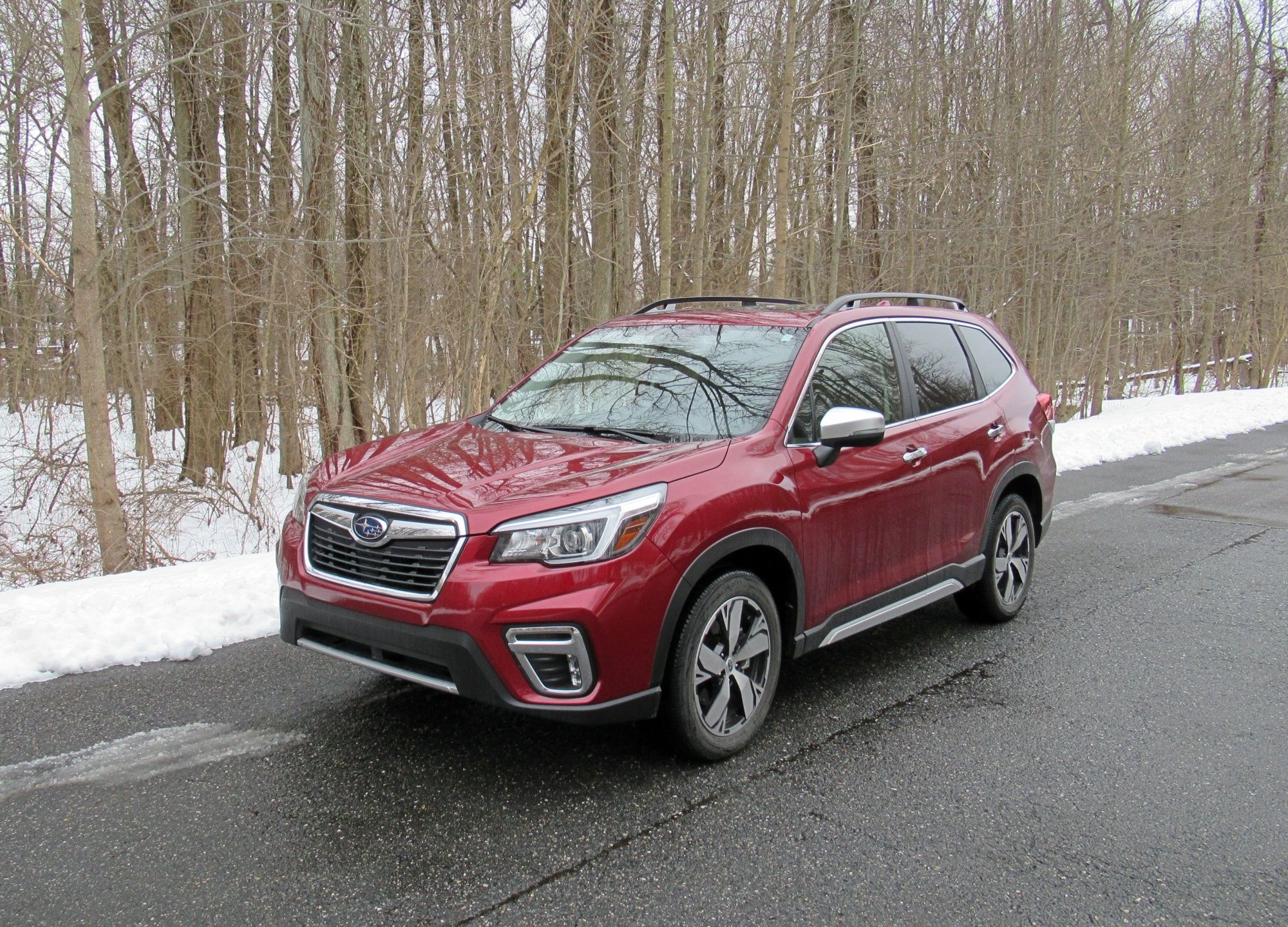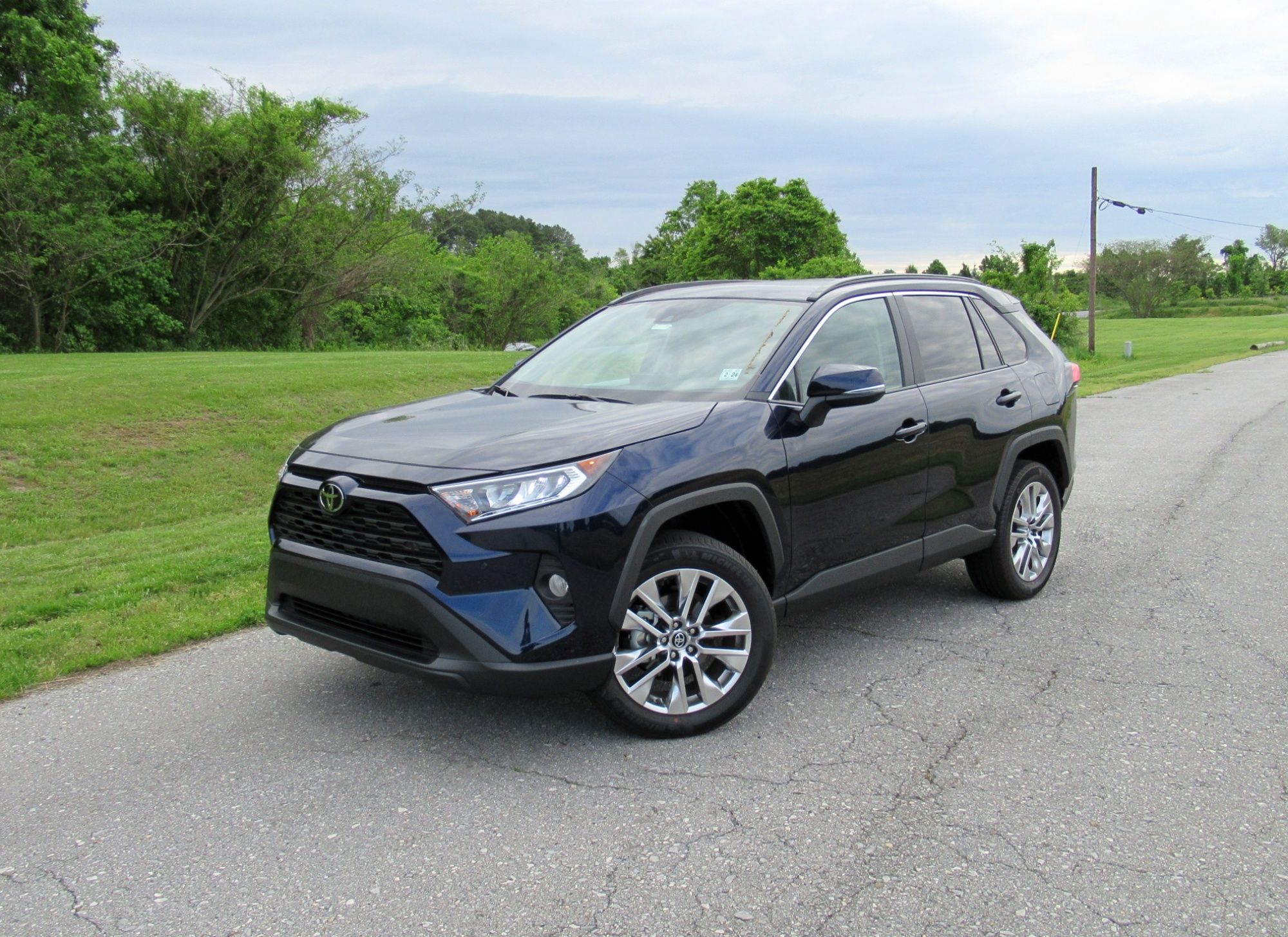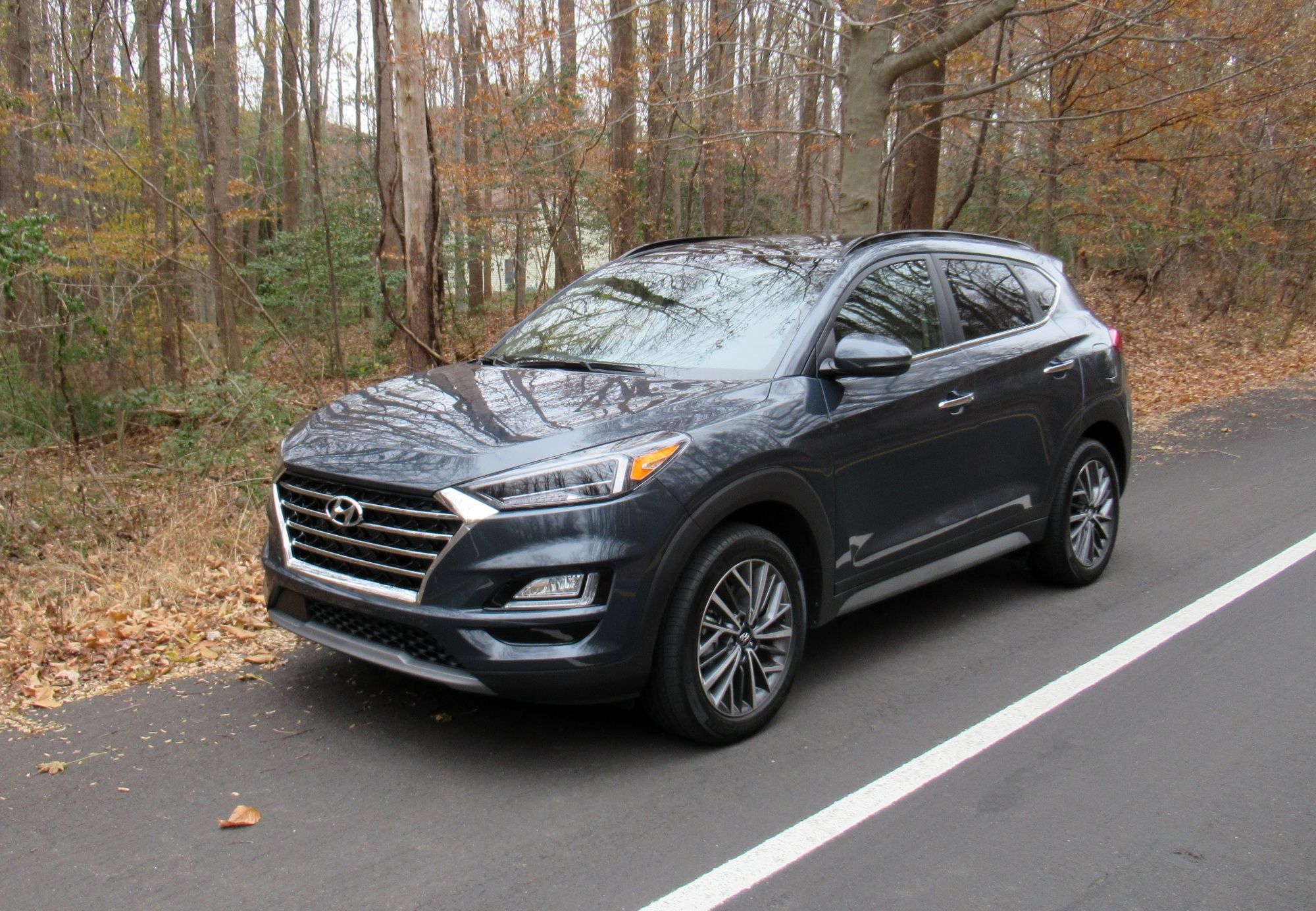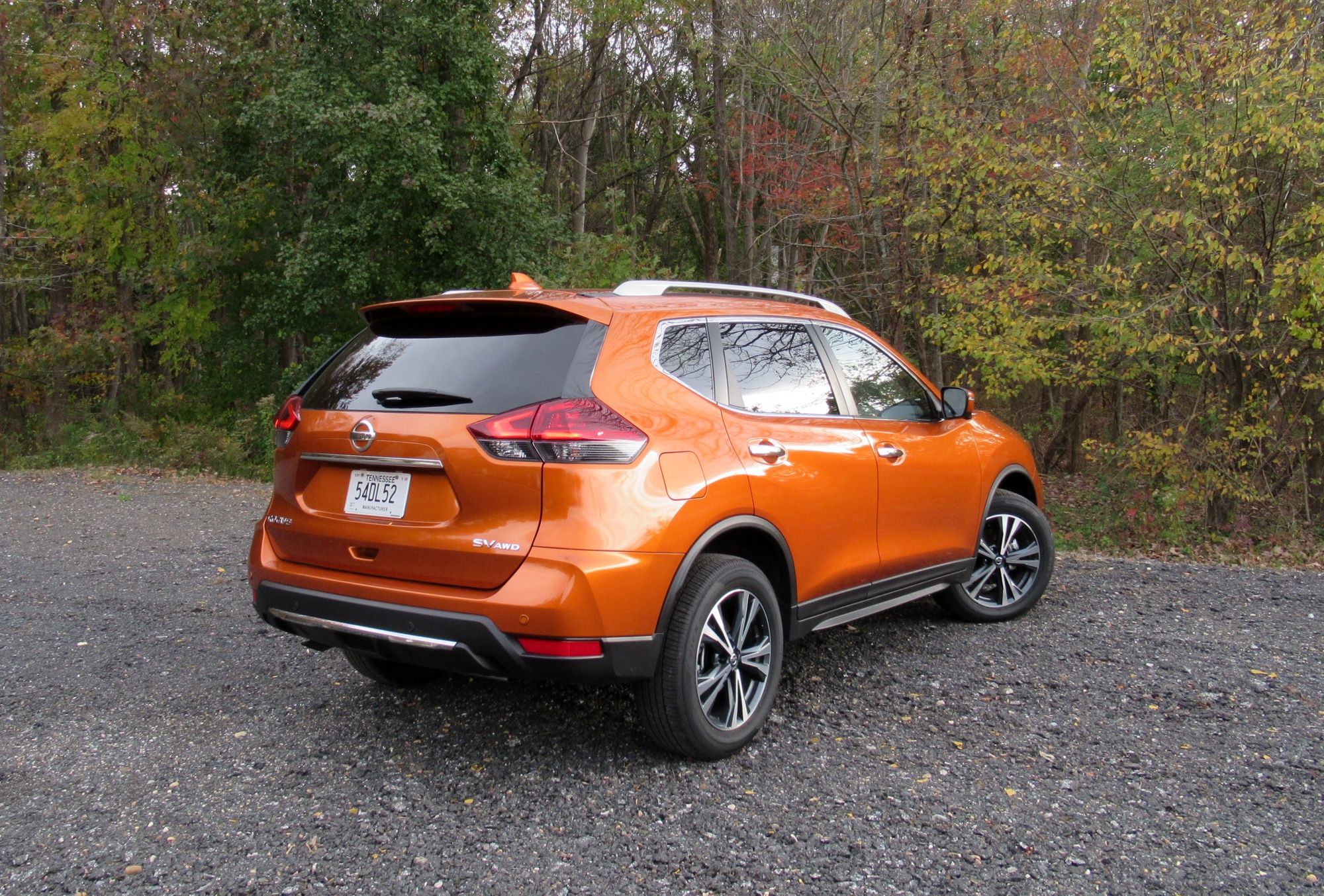It’s far too easy for car aficionados to dismiss an aging vehicle. “Just look at that dashboard — straight out of 2014. And that hopelessly uncompetitive engine, ugh; to keep up, it needs at least 11% more horsepower. Junk!”
Now, we’d never suggest that cars never fall behind the curve. Quite the contrary, it happens all the time in today’s fast-paced marketplace. But when a vehicle gets the important stuff right from the start, especially if it also benefits from updates over the years, it can still be a great choice in its segment throughout its lifespan. And that’s precisely the case we’re finding with the 2020 Nissan Rogue compact crossover, one of America’s best-selling vehicles. The Rogue still brings a handsome face, a pleasant driving experience, great gas mileage, and a spacious cabin. And it’s now laden with advanced driver-assistance technology, even on the base model.
True, the Rogue hasn’t changed much since its current generation debuted as a 2014 model. Yes, its interior still has the sort of humdrum plastics and plain shapes that most newer competitors have moved away from. And its 170 horsepower is undoubtedly on the low side for the segment these days. The Rogue isn’t one of the compact crossovers that brings a high degree of luxury, sporty performance, or overall pizzazz. But we’d challenge its critics to spend a week in one, study how it compares to its competitors, and still write it off as a tired relic. We found the Rogue to be a solid family vehicle at compelling prices, and we were pleasantly surprised by how much we enjoyed our time with it — and with the glowing praise it received from passengers. Prices start at $26,39, including destination charge.
2020 Nissan Rogue - Driven
- Make: Array
- Model: 2020 Nissan Rogue - Driven
2020 NISSAN ROGUE - DESIGN
Our tested Rogue wore the optional Monarch Orange paint job, and it’s undoubtedly striking. Nissan has offered more orange cars than anyone else in the last couple of decades, but this is one of its best. It’s richer than the more yellowish Saharan Sun tone that it replaced, yet not traffic-cone-bold like you’d see on a Subaru Crosstrek.
We started off with the Rogue’s color because its exterior design is otherwise so familiar. Nissan has sold more than 1.5 million of these crossovers since the current generation’s debut, so you’ve surely seen them around. The Rogue is a gently rounded box — neither an in-your-face truck nor a car on stilts. Its smart headlights flow smoothly into the grille, and tasteful amounts of chrome dress up that grille, the front and rear bumpers, the exterior door handles and the roof rails. A couple of years back, Nissan wisely turned the Rogue’s taillights from mostly white to mostly red, lessening their resemblance to a 2004 Lexus RX 330. We do wish Nissan were less stingy with foglights; even our $30,000-plus test vehicle wore gray plastic placeholders. But overall, this is a handsomely inoffensive crossover, and choosing a bold color like Monarch Orange or the rich, classy Scarlet Ember red keeps it from getting lost in the crowd.
The Rogue’s interior hasn’t aged as well as the exterior, at least in terms of stylistic verve. The sporty flat-bottomed steering wheel (a recent addition) sits in front of cleanly designed, classy gauges — two big chrome-ringed circles with attractive fonts and clear graphics. But the rest of the dashboard is mostly straight lines and expanses of plastic, dressed up only by shiny black on the center stack. A lot of this plastic feels cut-rate-basic, too, and some pieces don’t fit quite right on the center console. Competitors like the Honda CR-V and Mazda CX-5, among others, have brought more of a luxurious look and feel to the segment; the Rogue gets the job done without going farther.
Still, there’s something to be said for getting the job done. You can plop behind the wheel of a Rogue and figure out its controls in seconds. There’s a 7-inch touchscreen in the middle of the instrument panel — not perched atop the dashboard — with buttons and knobs around it. The buttons are a dull gray, and the screen is on the small side by today’s standards, but you don’t need a learning curve or multiple steps to tune the radio or turn on the seat heaters. The infotainment system is also compatible with Android Auto and Apple CarPlay on all Rogue trim levels, making up for Nissan’s late adoption of these useful smartphone-integration tools. And while the Rogue’s interior ambiance is decidedly plain, the door armrests are sumptuously padded.
2020 NISSAN ROGUE - UTILITY
A spacious interior is a great way to protect a car against the natural aging process. Newer competitors may look cooler, may drive better, or may have fancier technology, but we haven’t seen them necessarily getting bigger on the inside. Sometimes it’s just the opposite, the way the latest Toyota RAV4 gave up some interior space to pursue more aggressive styling and more off-road-ready ground clearance. So if you’re looking for a five-passenger crossover with plenty of room, the Rogue remains a standout. Like the Honda CR-V, it brings more passenger and cargo room than some midsize models — including Nissan’s own style-focused Murano.
You sit up nice and high in the Rogue, on seats that are firm, well-shaped, and comfortable. There’s uncommonly generous rear seat space, too, especially if you take full advantage of its fore-aft adjustment. The Rogue even fit a rear-facing child seat in the back with minimal impact on front-seat space — a rare quality at this size and price point, and one of several factors that pushed my wife to request a Rogue as our next family car. Nissan also left the vehicle’s LATCH car-seat anchors exposed rather than burying them between the seat cushions, making the car seat easier to install.
For cargo, Nissan provides a whopping 39 cubic feet of space behind the rear seat, and a still-impressive 70 cubic feet with the rear seat folded down. The seat drops easily down in a 60/40 split, while the fold-down center armrest can double as a pass-through for long items. The folded seatbacks don’t lie perfectly flat, but the operation is quick and easy. Nissan also provides a unique “Divide-N-Hide” adjustable cargo floor with adjustable and removable floor panels. You can choose between maximum cargo capacity or a slightly higher cargo floor (with hidden storage underneath) that’s flush with the height of the folded seatbacks, making it easier to slide in bulky items. You can also pivot the panel up to keep groceries or other small items from sliding around the expansive cargo hold, or use one of the panels as an upper cargo shelf.
If you plan to tow a trailer, though, note that the Rogue can only handle a disappointing 1,102 pounds.
2020 NISSAN ROGUE - HOW IT DRIVES
Several of today’s compact crossovers engage their drivers with sprightly handling and lively acceleration, like the Honda CR-V, Ford Escape and Mazda CX-5. Let us be perfectly clear: The Nissan Rogue is not one of these crossovers. It doesn’t want to party with you. It doesn’t want to dance lithely around a slalom course, and it will protest loudly if you demand the full effort of its 170 horsepower. But when the pace settles down, the Rogue proves to be a natural-feeling, easy-to-drive, and overall comfortable and pleasant crossover. The steering isn’t lightning-sharp or communicative, but it’s low-effort without feeling loose and disconnected. And the Rogue goes where it’s pointed without fuss. The overall experience is similar to the slightly peppier-feeling Subaru Forester, and also the Toyota RAV4, which is more powerful on paper than the Rogue but which doesn’t necessarily come across that way on the road.
2020 Nissan Rogue specs
|
Engine |
2.5-liter inline-4 |
|---|---|
|
Horsepower |
170 @ 6,000 rpm |
|
Torque (lb-ft) |
175 @ 4,400 rpm |
|
Transmission type |
Xtronic with Sport and Eco Mode switches |
Meanwhile, some Rogue drivers will minimize driving it at all, focusing on the advanced technology that’s standard on every Rogue and enhanced further with the available ProPilot Assist suite of driver-assistance systems. Optional on the mid-level SV and standard on the top-trim SL, ProPilot Assist combines adaptive cruise control with stop-and-go capability with the base Rogue’s existing ability to keep itself in its lane. This means the Rogue offers semi-autonomous driving capabilities that are especially handy in grueling stop-and-go traffic. Most competitors feature similar technologies, and some even have adaptive cruise control as standard equipment, but Nissan’s works better than most. Summon ProPilot Assist by tapping a button on the steering wheel showing a car encircled by protective radar waves.
When you’re driving yourself, meanwhile, we strongly recommend putting the Rogue into its “Eco” mode, selectable via a button next to your left knee. Eco mode dulls the throttle and transmission responses to save gas. “Now wait a second,” some of you might be thinking. “This car has one of the lowest horsepower ratings in its class, and we’re supposed to tell it to go slower??” Hear me out.
Like most Nissans, the Rogue has a continuously variable automatic transmission or CVT. CVTs automatically pick whichever gear ratio they deem ideal for a given situation, rather than switching among fixed gears. That means when you ask the engine to work hard, revs will instantly jump high to get the vehicle moving. In the Rogue’s Normal and Sport modes, the CVT interprets all but the lightest touches on the throttle as urgent calls for power — so it picks a gear ratio that marshals the engine’s full resources. The resulting cacophony makes the Rogue seem even slower than it is. But in Eco mode, we found that the transmission doesn’t bring such high revs when you aren’t really gunning the engine. If you aren’t driving with furious urgency, Eco mode recognizes that and keeps the revs down. And because you didn’t actually need the engine revving so high for this gentler acceleration, the Rogue is just as quick as if you accelerate lightly in Normal or Sport modes.
When you do put your foot to the floor, though, no amount of programming can disguise that the Rogue’s 2.5-liter naturally aspirated four-cylinder has less energy than the turbocharged CR-V or other key competitors. It will groan, and it will feel sluggish. This just isn’t the compact crossover for lead-footed drivers.
Gas mileage remains above-average, though. Fuel efficiency is a strength across the Nissan lineup, and it’s why the aging Rogue puts down better efficiency than several newer models — even some that aren’t any quicker, like the Hyundai Tucson and Volkswagen Tiguan. By the numbers, the Rogue achieves EPA estimates of 26 mpg in the city, 33 mpg on the highway, and 29 mpg overall in standard front-wheel-drive form, and about one mpg less with all-wheel-drive. That puts the FWD Rogue just one mpg behind the class-leading Toyota RAV4, Honda CR-V, and Ford Escape (not counting these three crossovers’ gas-electric hybrid variants, which the Rogue no longer offers), though the gap widens slightly with AWD.
2020 NISSAN ROGUE - PRICING
The 2020 Nissan Rogue has a base sticker price of $26,395, including its destination charge. By itself, that’s not super-impressive — putting the Rogue in the same league as the more luxurious, more fun-to-drive, and more fuel-efficient Honda CR-V ($26,145). But with steeper discounts than the CR-V and several other models, along with particularly generous standard equipment, the Rogue becomes a strong value in its class.
Standard features on every Rogue include a suite of advanced safety features — a forward collision warning with automatic emergency braking and pedestrian detection; blind-spot monitoring with a rear cross-traffic alert, a lane-departure warning with automatic steering assistance, and automatic high beams. Other goodies provided at no extra cost include a 7-inch infotainment touchscreen with Android Auto and Apple CarPlay, Bluetooth, and satellite radio. All-wheel-drive costs a modest $1,350 extra on any trim level.
The best deal in the Rogue lineup is the midlevel SV model with no additional options, priced at $27,815 with FWD or $29,165 with AWD. For $1,420 extra over the base S, it dresses up the vehicle’s exterior with chrome door handles (instead of black plastic) and 17-inch alloy wheels; packs the cabin with a power driver’s seat, heated front seats, a leather-wrapped steering wheel, dual-zone automatic climate control, push-button engine starting, and a six-speaker sound system (instead of four speakers); ups the safety game with rear parking sensors and rear automatic braking; and provides a handy power liftgate with motion-sensor activation. Our test vehicle also had the $1,800 SV Premium Package, a fair price for the following additions:
-* 18-inch wheels
-* Factory navigation system
-* electronic parking brake
-* Heated steering wheel
-* Memory system for the power driver’s seat
-* Surround-view parking camera.
But we’d pass on adding any additional major options to the Rogue. This isn’t a luxury vehicle, and its noisy engine and downscale cabin trim become more glaring the higher the vehicle’s price gets. What’s more, some of these options are so expensive that they eliminate the Rogue’s value advantage over the competition. So unless you’re really in love with the Rogue, we’d skip the $2,045 addition of a panoramic moonroof, Bose sound system, and foglights to the SV model. And we’d avoid the top SL trim level entirely, which hits a whopping $35,955 with all-wheel-drive and the optional moonroof — Nissan is charging you a whopping $3,300 more than the loaded Rogue SV for little more than leather upholstery and 19-inch wheels.
2020 NISSAN ROGUE KEY COMPETITORS
2020 Honda CR-V
The Honda CR-V is often considered the best all-around compact crossover, and for good reason — it pulls off a stellar blend of spaciousness, driving dynamics and fuel efficiency, with few glaring flaws. But you pay for what you get, with the CR-V offering less standard equipment than the Rogue and typically selling for a few thousand dollars more (unless you want leather upholstery when the Rogue’s price advantage disappears versus nearly all competitors).
Read our full review on the 2020 Honda CR-V
2020 Subaru Forester
We mentioned earlier that the Forester has a similar feel to the Rogue. Both focus on spaciousness, user-friendliness, comfort, fuel economy, and value — and making little attempt to provide a sporty, fun driving experience, or an opulent cabin design. The Forester can even undercut the Rogue’s price, depending on what features you want. The Subaru has extra-generous outward visibility, but a little less interior space than the Rogue and buyers need to beware of overpriced options tacked on to many otherwise-affordable Subarus.
Read our full review on the 2020 Subaru Forester
2020 Toyota RAV4
Last year’s best-selling compact crossover, the latest RAV4 has won acclaim for its more SUV-like styling, and it backs up those looks with a higher ground clearance and dedicated off-road models with more advanced all-wheel-drive systems. But it’s no longer as roomy as the Rogue, and its on-road driving dynamics continue to trail the CR-V’s. And unless you buy the excellent gas-electric hybrid powertrain, the RAV4’s engine is noisy, and the vehicle feels sluggish.
Read our full review on the 2020 Toyota RAV4
2020 Hyundai Tucson
One of the budget leaders in the compact crossover segment, along with its Kia Sportage cousin, the Tucson delivers a generally pleasant driving experience and lots of standard features at bargain prices. They both sell for a couple thousand dollars less than a comparably equipped Rogue, even as they feel more modern and upscale compared to the all-business Nissan. But their value advantage suffers from disappointing fuel economy, and they’re almost half a size smaller than the Rogue.
Read our full review on the 2020 Hyundai Tucson
2020 Nissan Rogue Sport
Don’t confuse the compact Nissan Rogue with the subcompact Rogue Sport. They have similar designs inside and out, but the Rogue Sport trades spaciousness and power — yes, with 141 horsepower, it’s even farther from a performance car than the bigger Rogue — for extra maneuverability and a slightly lower price. With a relatively low price difference, though, our pick is the Rogue; we’d gladly pay about $2,000 extra to get the Rogue’s more expansive cabin, smoother ride, additional power and, thanks to an engine that’s less overworked, better gas mileage. That said, if you prefer a subcompact vehicle or are on a strict budget, the Rogue Sport delivers more space and comfort than most of its class.
Read our full review on the 2020 Nissan Rogue Sport
2020 NISSAN ROGUE IN A NUTSHELL
The Rogue isn’t for everyone. For similar money, you can get a competitor that is flashier, is more fun to drive, and has a more modern interior design. And for plenty of folks, that’s three strikes against it — and they’ll go buy a beautiful Mazda CX-5 or a supremely well-rounded Honda CR-V. But countless others prioritize utility, user-friendliness, and value for the money, and that’s where the Rogue shines. And as long as you don’t try to push it too hard (and stick with Eco mode), it’s pleasantly inoffensive to drive. As a spacious, comfortable, and affordable family car, it remains in the upper tier of its class even after all these years.

